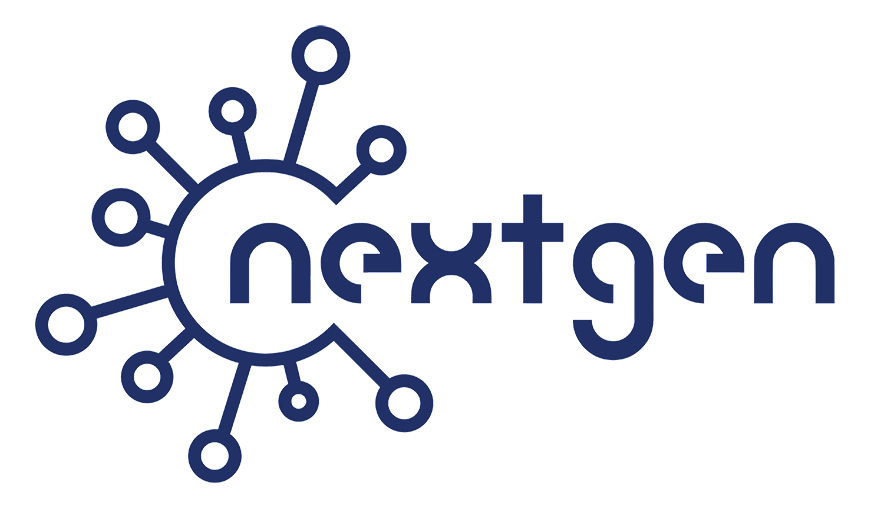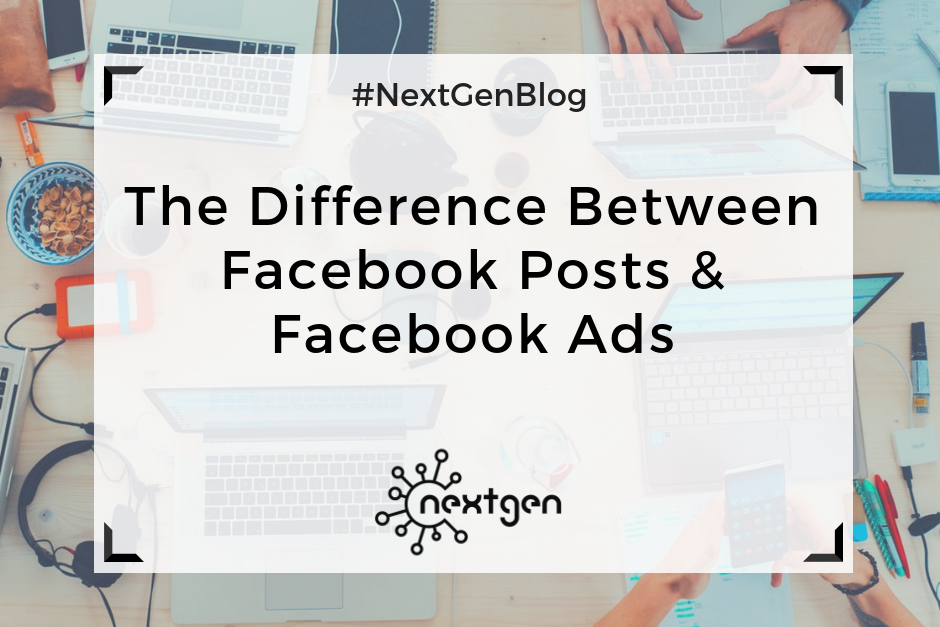
by Sofi | Dec 15, 2017 | Social Media Marketing
If you want to advertise on Facebook, you can essentially choose between two advertising methods: boosting your posts, or creating Facebook ads. Many people can’t tell the difference between the two, and are often confused when they need to choose which option to use. So, let’s explain each method to help you understand the difference.
Boosted Posts
By allocating a portion of your advertising budget you can boost a post that you already posted on your page. A regular post on its own usually reaches only a small portion of your audience. On the other hand, boosting a post means that more people will see it. You can boost status updates, photos, videos, and offers from your business page, and they will appear higher in the News Feed of your targeted audience.
You can build your audience based on “people you choose through targeting” (interests, demographics, behaviors), “people who like your page”, or “people who like your page and their friends”. By boosting a post, you can increase audience engagement, such as likes, comments, and shares, and therefore increase brand awareness.
You can boost a post directly from the blue “Boost” button that appears in the right-hand corner of your posts, or you can do it from the Facebook Ad Manager. The boosted posts appear as “Sponsored” posts in the News Feed.
Facebook Ads
To create Facebook ads, you need to have a Facebook Ad account. Unlike boosting a post, when you create a Facebook ad, you have more advanced targeting, formatting, and analytics options.
Depending on your goal, you can choose from different ad objectives:
- awareness (brand awareness, local awareness, reach)
- consideration (traffic, engagement, app installs, video views, lead generation)
- conversion (conversions, product catalogue sales, store visits)
When setting up the campaign, you can use advanced targeting options, such as:
- demographics (location, age, gender, languages, etc.)
- interests (business and industry, entertainment, family and relationships, hobbies and activities, etc.)
- behaviors (business-to-business, job role, expats, travel, media, etc.)
- connections (people who liked your page, people who used your app, people who are going to your event, etc.)
- remarketing (people who visited your website, custom lists of emails, custom lists of phone numbers, or custom lists of Facebook user ID-s)
After determining your audience, you can add budget, creative (an image or video that people will see), and messaging. When creating ads, you also have the option to use call to action buttons, such as “Like our page”, “Shop now”, “Get directions”, and others. Facebook ads also appear as “Sponsored” posts in the News Feed.
***
Whether you decide to use a Facebook ad, or boost your organic posts, depends on your overall goals. If you want to increase post likes and comments, then you should go with boosted posts. If you want to generate leads or drive traffic to your website, then you should go with Facebook ads. Determine what you want to achieve, and choose the appropriate advertising method.
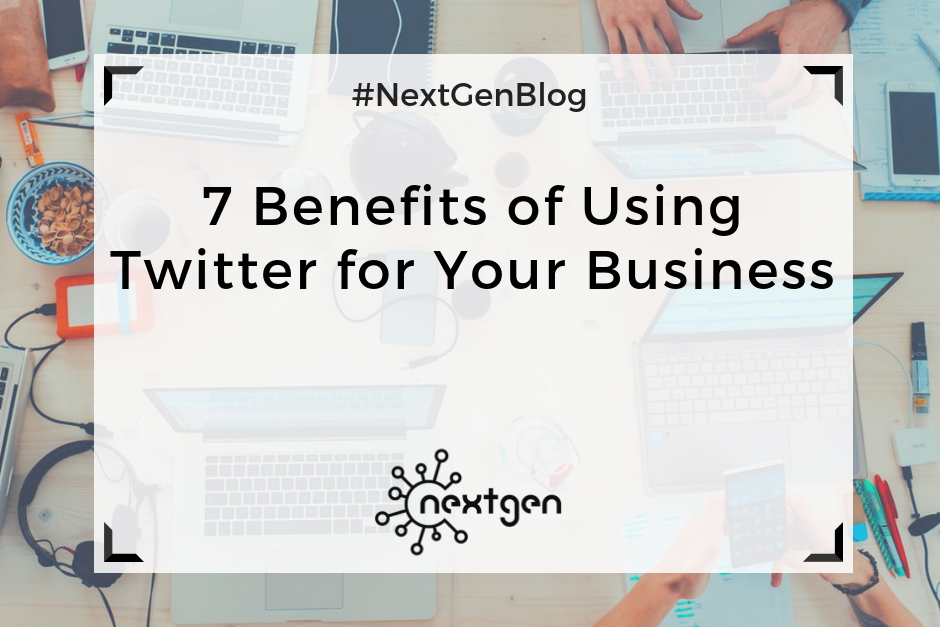
by Sofi | Dec 8, 2017 | Social Media Marketing
Twitter was found in 2006, and has stood the test of time, becoming one of the most popular social media networks in existence. As of the third quarter of 2017 the network had about 330 million active users, according to Statista.
Twitter has also become a popular social media marketing tool among companies, which use it to promote and grow their businesses. However, there are many that haven’t jumped on the Twitter bandwagon, and still hesitate to use it. So, we made a list of seven important benefits of using Twitter for your business.
#1 Cost-effectiveness
There are no costs for joining Twitter. Creating an account on the platform and tweeting are free of charge. You only need to have a computer, tablet, or smartphone, and an internet connection.
#2 Reaching wide audience
As mentioned above, Twitter is one of the most used social media networks right now, with millions of active users. All kinds of people and institutions use it, including celebrities, politicians, corporations, etc. This means that you can easily reach large and diverse audiences by posting relevant content.
#3 Increasing brand awareness
You can increase awareness for your business on Twitter, by focusing on tweeting great content. Great content has a big chance of getting retweeted, meaning more people will see it, and those people can become your new followers. If your followers like your content, they can later become your customers.
#4 Boosting SEO and driving website traffic
Tweets appear in Google searches, so use appropriate keywords and tweet about topics you want to rank for. Maximize the reach of your tweets to get more traffic to your website. Make sure you include an URL to your website in the website field or your profile’s bio. Determine the optimal times of day for tweeting, and use hashtags to increase engagement. You can also create Twitter Ads campaigns and boost your tweets.
#5 Getting feedback
Tweeting is a great way to interact with customers, keep them updated about news for your business, and ask them for opinions on your products. People are usually happy to share their thoughts online, so you can use that information to improve your products and increase customer satisfaction.
#6 Following trends
By searching and following Twitter trends, you can find out what topics are Twitter users interested in at the moment, read about current trends in your industry, and even find out what people are saying about your brand. You can conveniently get real-time information about hot topics and trends, at any time.
#7 Keeping eye on the competition
If your competitors are on Twitter, then you have a chance to watch closely what they do. It’s good to occasionally check what they’re up to, because being aware of what your competition is doing can help you make better decisions for your business, and plan your marketing efforts accordingly.
***
Twitter community is constantly growing, and it’s slowly but surely becoming a must-have marketing tool for almost any kind of business.
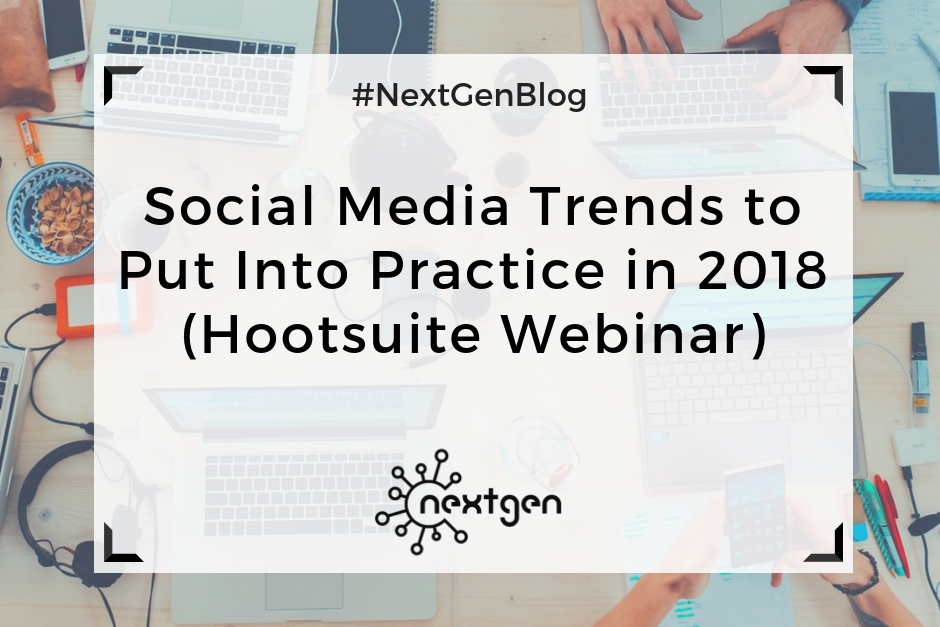
by Sofi | Dec 1, 2017 | Social Media Marketing
As 2017 is coming to an end, marketers are getting ready for the upcoming year. They predict new trends, and prepare new strategies. I recently listened to Hootsuite’s Webinar on social media trends for 2018, so I’ll share with you the key takeaways to help you prepare your social media strategies effectively and on time.
I. Where social media networks are headed
Social media networks are constantly evolving, and they will offer new opportunities for businesses next year.
Facebook – Facebook is pushing three important features for 2018: mobile video; messenger ads to encourage businesses to communicate more with their customers; and FB groups as a way for brands to engage with their audiences, and people to engage with content outside of the crowded newsfeed.
YouTube – YouTube will focus more on high-quality content in the future. It will become the go-to platform for mobile streaming, and it will grow into a platform for live streaming and social tv content.
Instagram – Instagram is growing fast and brands are seeing organic and peer-to-peer success on this network. They are introducing a lot of new advertising features, such as links in ads and stories which you can add to your e-commerce or website.
Twitter – Twitter has now a lot of video and personalized recommendations, direct response ad formats, and a particularly important feature is in-stream video ads. Twitter is partnering with some big media brands, and that can help you reach broad audiences.
LinkedIn – LinkedIn will have more CRM integrations with Microsoft cloud products, which will be key for B2B businesses. They want to become the number 1 platform where professionals consume content, so they are introducing many social features, such as video creation tool, messenger features, Snapchat geofilters for events and conferences, etc.
II. Three key challenges for organizations in 2018
Organizations will face three key challenges in the upcoming year:
- To find solution for declining organic reach
- To keep pace with algorithmic shifts and social network innovation
- Proving the ROI of existing strategies, before moving to new innovation
III. Global social behaviors
- Social dominates time spent on mobile – Every 1 in 3 minutes spent on mobile is spent inside a social app. As consumers spent more time on social networks, new types of behaviors increase.
- Passive social behaviors continue to climb – Users primarily use social media to find entertainment, to access the news, and fill their spare time. There is more engagement on specialized social media platforms.
- Consumers integrate social deeper into their purchase journeys – 28% of global internet users use social network for online product research. This sets the stage for social commerce and more functional uses of social media.
IV. Five social media trends for 2018
These are the social media trends Hootsuite shared for next year, and practical ways for you to put them into action.
Trend 1: The evolution of social ROI
Marketers that are not being able to prove ROI find it difficult to be successful on social media, to win executive support, or get budget for new innovations. The problem is that while data is easy to collect, it’s hard to tie to business outcomes. Three shifts to ROI measurement need to be made: measuring beyond content performance metrics; measuring the activity with customer journey stages; and CMOs helping in identifying the business objectives for social.
Hootsuite recommendations: invest first in what you can measure; nail the basics with UTM codes; follow Hootsuite’s ROI framework; and map your metrics to the customer journey.
Trend 2: Mobile fuels the growth of social TV
Social video is on the rise, and social networks are shifting more toward broadcast style content and metrics. It’s also estimated that Internet advertising spend will outpace traditional TV spend. The main social TV opportunities for companies include: extending traditional TV content to mobile audiences; creating new partnerships with micro influencers and community engagement with groups; and launching products with live podcasts and innovating with Facebook’s Live API.
Hootsuite recommendations: include social video as a tactic in your strategy; combine SEO and Facebook Live; partner with Watch Tab influencers; and consider shifting budgets back to Facebook video ads.
Trend 3: Trust declines, while peer influence rises
People lack faith in the old institutions that include government, media, business, and NGOs, and they turn to people they know and trust. Peers have become more relevant than any other source of information. Marketers are also becoming skeptical about mega influencers and celebrity endorsements, and they are too valuing peer-to-peer recommendations and genuine endorsements from people close to the brand or the product. So, 2018 will reward businesses that put people at the center of their marketing strategy.
Hootsuite recommendation: think beyond reach and traffic and focus on creating customer and employee advocacy; build advocate communities with FB groups; use micro and macro influencers; and go unscripted on Facebook Live.
Trend 4: Humans, meet AI
There is an interest and adoption of AI by some innovative companies, and there will be more adoption and practical applications of AI in 2018. However, brands need to make sure that their AI strategies are human, helpful, and relevant. AI use cases for social marketing include: humans and bots helping customers together to elevate customer care; messaging apps will become much more personalized content channels; and AI will provide faster time to insights with predictive analysis.
Hootsuite recommendations: you can get your own report robot, like Quill Engage Google Analytics tool, and build with a bot template, so you can find a solution partner that will augment your social media strategy with AI.
Trend 5: The promise and reality of social data
Organizations are struggling with social data because of: lack of time and resources needed for social data projects; integration of social data with other tools; and culture and politics, because different departments have different agendas and data can be political.
Hootsuite recommendations: Marketers need to be comfortable making assumptions and pull out insights to make better decisions and guide new strategies. They can also combine social data with more traditional sources of customer insight, like market research.
***
It seems like 2018 will be an exciting year for social media, and now that you now what to expect, start creating appropriate social media strategies for your business.
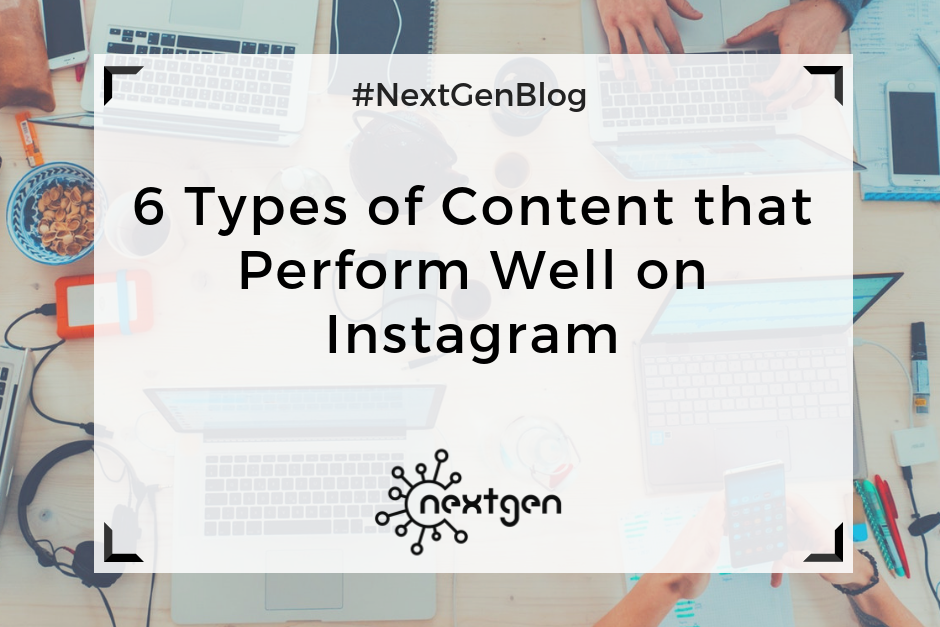
by Sofi | Nov 24, 2017 | Social Media Marketing
Instagram is currently one of the most popular social media networks in existence. According to Statista, they had 800 million monthly active users as of September this year. The platform is mainly used for sharing photos and videos from smartphones, and about a year ago Instagram launched their new feature – Instagram Stories, which was an instant success.
Since there are so many users on Instagram, many companies are taking advantage of the platform to promote and grow their business. They create accounts and share content to engage with their customers. However, certain types of content perform better than others. So, here is a list of the most engaging types of content on Instagram.
#1 UGC
User generated content (UGC) is when brands repost photos from their customers on their own profiles. It has become a popular social media marketing trend, and for a good reason. It is affordable yet powerful strategy for increasing your brand’s visibility and customer engagement. Regramming your customer’s photos shows them you appreciate them and their opinion about your products. Additionally, you always have available new content to post on your profile, and you save time and money for creating your own. GoPro is the best example of a brand that superbly uses UGC. They continuously engage their customers by encouraging them to post cool photos taken with GoPro cameras, and then reposting the photos on their profile which has millions of followers.
#2 Behind the scenes
By posting behind the scenes photos you show the human side of your brand. Keep in mind that everybody likes brands that value their employees. You can post photos of your happy employees working hard, activities where they show off their specific skills, their work spaces, and different types of events, such as birthdays, holiday celebrations in the office, or even a simple launch break. By posting this type of content you show you have a great company culture and a good working environment. This may also inspire your employees to share photos on their own profiles, thus further increasing their popularity and reach.
#3 Motivational and inspirational quotes
People like stuff that makes them feel motivated and inspired. If you post a motivational or inspirational quote that really hits the nerve of people, chances are they will like it and share it with others. Quotes from famous people that your customers admire can always perform well, but if you can come up with something original and awesome yourself, then you should go for it.
#4 Contests
Contests are a great way to engage your followers and promote your brand. You can organize fun contests with simple rules and give different kinds of prizes to motivate people to participate. The prizes don’t have to be something glamorous or too expensive as long as they’re exciting enough for your customers. For example, you can reward the winners with gift cards, discount cards, or they can win some of your products for free.
#5 Funny posts
If it’s appropriate for your brand, consider posting something funny from time to time. Everybody absolutely loves positive content. A hilarious joke, or a funny photo or meme can go a long way. This type of content gets shared a lot, and generates huge engagement. So, brighten up the day of your customers by giving them a good laugh.
#6 Product photos
Your audience follows you to keep up with news about your brand and products, so don’t forget to post photos of your products highlighting their features. You can post photos of what you have in-store, your best-selling items, product pairings, etc. Make sure you post quality photos with great colors and make use of the Instagram filters to make your photos look even better. By promoting your products, you also promote your brand, thus increasing brand awareness, and boosting sales.
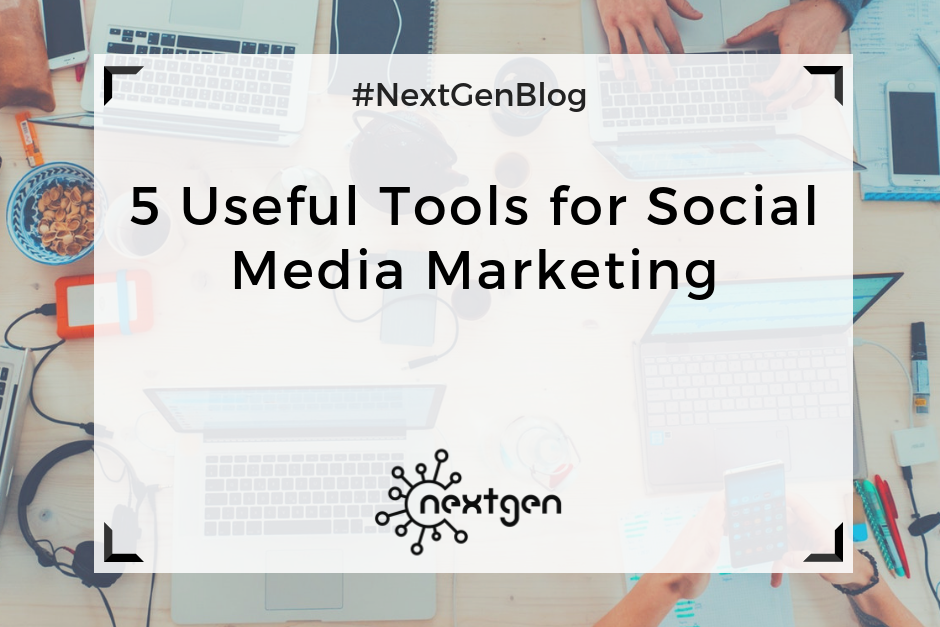
by Sofi | Oct 20, 2017 | Digital Marketing Tools, Social Media Marketing
Social media marketing is all about creating and publishing awesome content on social media, with the aim of getting and retaining customers. Although it sounds easy, it can sometimes be a very demanding job. Luckily, there is a variety of online tools that you can use for creating and managing your social media content. So, I made a list of 5 handy tools that can help you work on your social media marketing projects.
#1 Canva
Canva is an online tool for creating graphic designs and documents. It is used by both professionals and non-professionals. You can use Canva to create many different types of designs such as: social media posts, presentations, posters, postcards, flyers, and many others. There are number of different layouts and elements you can choose from when creating your designs. In the free version of Canva there are a lot of photos, icons, illustrations and other elements that you can use for free, but there is also a great choice of priced elements that you can buy for 1 dollar. There are also paid versions of Canva (Canva for work and Canva Enterprise) which offer additional options, but the free version works good enough for most people.
Page link: https://www.canva.com/
#2 Hootsuite
Hootsuite is a social media management platform, for managing multiple social media networks such as Facebook, Twitter, Google +, Instagram, and many more. This tool is great if you need to manage a few different social media accounts. There is a dashboard where you can publish and schedule content on all your accounts, you can receive messages, monitor the activities of your followers and interact with them, etc. You can do all of this for free if you manage up to 3 different accounts, or you can upgrade for an additional cost, and get more options.
Page link: https://hootsuite.com/
#3 Google Alerts
Google Alerts is a great content tracking tool. When you want to track information on a certain topic, Google Alerts can notify you via e-mail about the most recent articles, web pages, blogs, scientific studies and other information sources, which are on that topic. This way you can be constantly updated with new information about any search term you want to track, without spending time doing your own research. This can be very helpful if you’re writing blogs or any kind of content. You can set either g-mail or a different e-mail address to receive your Google Alerts, and you can use this tool for free.
Page link: https://www.google.com/alerts
#4 Google Analytics
Google Analytics is a free website analytics service, that tracks website traffic using a tracking JavaScript code, and creates reports. It’s one of the most powerful tools businesses use for getting different website statistics and data about their customers. So it provides you with great insight you can use for your marketing strategies. In Google Analytics you can set and track different social media goals and metrics, which can help you make appropriate marketing decisions in the future.
Page link: https://analytics.google.com/
#5 Asana
Asana is a web-based tool, that teams use to track their tasks and projects. It allows them to easily coordinate their work by online collaboration. You can use Asana to organize your team, supervise the work progress of your employees, or to work together with your colleagues on certain tasks. Using this tool, you can more conveniently share and comment projects with your team, compared to using an e-mail. This tool can be also helpful for coordinating your social media marketing activities, especially if you have an outsourcing job.
Page link: https://asana.com/

